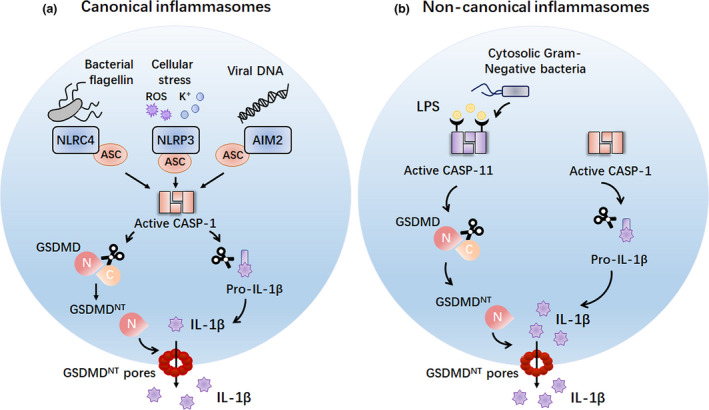Figure 1.

Inflammatory caspases induce GSDMDNT‐dependent pyroptosis. (a) The canonical inflammasome sensors, including NLRC4, NLRP3 and AIM2, detect diverse microbial signals and activate caspase‐1 through the ASC in macrophages. Active caspase‐1 can cleave GSDMD to liberate the pyroptotic GSDMDNT domain to form pores in the plasma membrane, ultimately resulting in pyroptosis. In addition, active caspase‐1 also processes the pro‐inflammatory cytokine pro‐IL‐1β to generate mature IL‐1β, which is presumably released by cell lysis during pyroptosis. (b) The non‐canonical inflammasome detects cytosolic Gram‐negative bacteria or LPS molecules and activates caspase‐11 (or caspase‐4/5 in humans) in macrophages. Active caspase‐11 can cleave GSDMD to release the cytotoxic GSDMDNT fragment to drive pyroptosis. ACS, apoptosis‐associated speck‐like protein containing a CARD; AIM2, absent in melanoma 2; CASP‐1, caspase‐1; CASP‐11, caspase‐11; LPS, lipopolysaccharide; NLRC4, NLR caspase activation and recruitment domain (CARD) domain‐containing 4; NLRP3, Nod‐like receptor (NLR) pyrin domain‐containing 3; ROS, reactive oxygen species.
